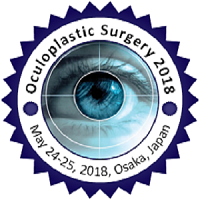Biography
Biography: Chaokai Chang
Abstract
Purpose: To investigate if presbyopic induce accommodative spasm can be a factor in causing or aggravating dry eye disease. Teaching hospital clinical observational study combines with National Health Insurance database (population data base), 14 years of retrograde data statistical analysis.
Methods: 26193 presbyopic cases and 122959 age-matched control subjects were recruited using the National Health Insurance database. Kaplen-Meier Survival analysis method where use to calculate the hazard rates of these patients becoming dry eye. Using Stratified Cox Proportional Hazard model, confounding factors such as DM, allergic eye, post-surgery status were adjusted and the hazard rate ratio where obtained. 25 patients from dry eye clinic were recruited into the observational study. Dry eye disease was established by traditional methods. Hyperopic/presbyopic corrective glasses were prescribed and patients were follow-up with OSDI (ocular surface disease index) and other dry eye indexes.
Results: The Kaplen-Meier survival curve shows a significant difference between those cases who had presbyopia and those that do not have presbyopia diagnosis. After adjusting for confounding factors with Cox model, the hazard ratio was calculated to be 2.61, showing a significant increase of risk for those that have presbyopia to acquire dry eye disease. In the clinical observational study, full hyperopic corrections and near corrections of glasses were given to the 25 cases, the OSDI shows improvements of symptom signs as soon as 1 week time.
Conclusions: We have statistically proved that the risk of having dry eye disease is much higher if the patient had presbyopic refractive errors. Clinically follow-up of dry eye patients with aggressive treatment of this refractive error such as use of full corrective glasses show an improvement of OSDI. We therefore proposed that presbyopic refractive error can aggravate dry eye disease.

